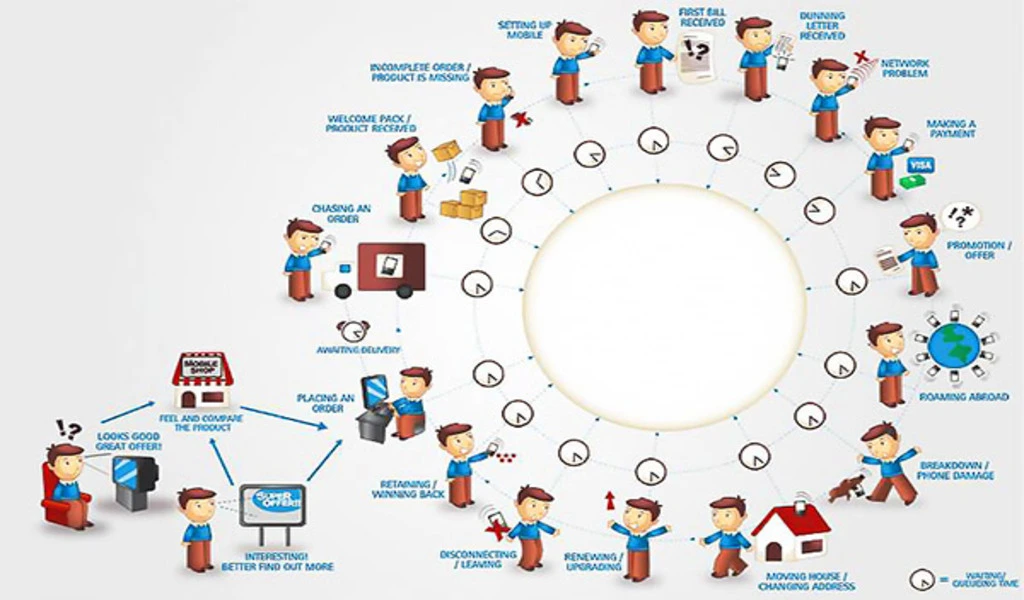Learning
Mapping the User’s Path: A Step-by-Step Guide to Creating UX Journey Maps

UX journey map – From the digital perspective, every interaction, click, and scroll tells a story—a story of the user’s journey through the complexities of your design. Understanding users’ complex journeys while interacting with a product or service has become essential.
This journey, often filled with emotions, interactions, and pain points, is key to crafting user-centric designs that delightfully resonate. The UX journey map is a visual representation that provides designers and teams with profound insights into the user’s experience.
In this guide, we’re not just exploring the process of creating UX journey maps; we’re undertaking a journey ourselves to unveil the human side of design.
We’ll delve into the intricate process of stepping into users’ shoes, tracing their footsteps, and translating their experiences into insights that transform design strategies.
This comprehensive guide cracks the step-by-step process of creating effective UX journey maps, illuminating the path to designing experiences that captivate and satisfy users.
Step 1: Define Your User Persona
Every successful journey begins with a clear understanding of the traveler. In UX, this traveler is your user persona—a composite representation of your target audience. Craft a persona encompassing their demographics, motivations, goals, preferences, and pain points. This persona will serve as the compass that guides your journey-mapping process.
Step 2: Identify Key Touchpoints
Picture your user as they navigate through your product or service. Identify the pivotal touchpoints where they interact with your offering—discovering your product, signing up, using features, seeking help, or even bidding farewell. Each touchpoint is a milestone on their journey, offering valuable insights into their thoughts and feelings.
Step 3: Gather User Insights
Gather user insights through surveys, interviews, and usability testing to breathe life into your journey map. Directly engage with your users to understand their experiences, motivations, and emotions at each touchpoint. These qualitative insights will inject authenticity and depth into your map.
Step 4: Create a Visual Timeline
Lay out the user’s journey along a visual timeline, starting from their initial encounter with your product or service and moving through each touchpoint. This chronological arrangement helps you identify patterns, transitions, and gaps in their experience, offering a holistic view of their interactions.
Step 5: Define User Goals and Emotions
At each touchpoint, delve into the user’s psyche. What are their goals? How do they feel? Are they excited, frustrated, satisfied, or confused? Infuse your journey map with these emotions, transforming it from a mere diagram into a vibrant narrative that humanizes the user’s experience.
Step 6: Highlight Pain Points and Opportunities
As you traverse the user’s journey, identify pain points—those moments of frustration, confusion, or dissatisfaction that disrupt their seamless experience.
Conversely, pinpoint opportunities where users find delight, satisfaction, or ease. These pain points and opportunities become guideposts for your design improvements.
Step 7: Visualize User Paths
Users don’t tread a singular path; their journeys can diverge based on their choices and needs. Visualize these alternative paths to understand user behavior and decision-making comprehensively. This insight equips you to design for multiple scenarios and cater to a diverse user base.
Step 8: Prioritize and Strategize
Equipped with a detailed map, it’s time to prioritize. Focus on pain points and areas of improvement that can cause the most effective impact on the user experience. Develop strategies to tackle these challenges, ensuring your design solutions resonate with user needs.
Step 9: Collaborate and Communicate
A journey map is a tool for collaboration. Share your map with stakeholders, designers, developers, and anyone invested in the user’s experience. The map fosters a shared understanding, sparks discussions, and aligns everyone around the common goal of creating exceptional user journeys.
Step 10: Iterate and Evolve
User experiences are dynamic, and your journey map should reflect this dynamism. Regularly revisit and update your map as you gather new insights, roll out enhancements, or adapt to changing user behaviors. Iteration is the key to keeping your designs user-centric and relevant.
Conclusion: Guiding Design with Empathy
In the realm of UX design, empathy reigns supreme. UX journey maps embody this empathy, enabling you to view the design landscape through your users’ eyes. By meticulously tracing their journey, emotions, and pain points, you unlock the door to crafting experiences that resonate profoundly.
Whether redesigning an existing product or launching a new service, the step-by-step process of creating a UX journey map empowers you to walk in your users’ shoes.
It allows you to navigate their experiences, transform pain into delight, and weave a story that encapsulates the essence of user-centric design. Through the art of mapping, you chart a course toward captivating and satisfying user journeys, illuminating the path to digital success.
SEE ALSO: Kindle Cloud Reader: Access Your Favorite Books Anywhere, Anytime



























